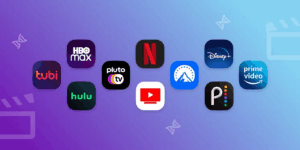In the fast-evolving field of neurology, the right software can make a significant difference in how labs and clinics operate. With the increasing complexity of neurological data and the need for precise analysis, choosing the right neurology software is crucial for enhancing patient care and improving research outcomes. This guide will walk you through the essential factors to consider when selecting neurology software, including a look at innovative solutions like neuromatch.
Understanding Your Needs
Before diving into the specifics of software eeg software , it’s essential to assess your lab or clinic’s unique needs. Consider the following questions:
-
What types of neurological assessments do you conduct?
Different software solutions cater to various aspects of neurology, such as EEG analysis, neuroimaging, or cognitive assessments. Understanding your primary focus will help narrow down your options. -
What is your budget?
Neurology software can vary significantly in price. Establishing a budget will help you filter out options that are not financially feasible. -
How many users will need access?
Consider the number of staff members who will use the software. Some solutions offer tiered pricing based on the number of users, while others may have a flat fee.
Key Features to Look For
When evaluating neurology software, certain features can significantly enhance your lab or clinic’s efficiency and effectiveness. Here are some key features to consider:
1. Data Management and Integration
A robust neurology software solution should offer comprehensive data management capabilities. This includes the ability to store, retrieve, and analyze large volumes of data efficiently. Additionally, look for software that integrates seamlessly with existing systems, such as electronic health records (EHR) or laboratory information management systems (LIMS). Integration can streamline workflows and reduce the risk of data entry errors.
2. Advanced Analysis Tools
The ability to analyze neurological data accurately is paramount. Look for software that provides advanced analysis tools, such as automated artifact detection, real-time data processing, and customizable analysis protocols. Solutions like neuromatch offer sophisticated algorithms that can enhance the accuracy and speed of data analysis, making it easier to draw meaningful conclusions from complex datasets.
3. User-Friendly Interface
A user-friendly interface is essential for ensuring that all staff members can navigate the software with ease. Look for intuitive designs that minimize the learning curve. Features such as drag-and-drop functionality, customizable dashboards, and clear navigation menus can significantly enhance user experience.
4. Visualization Capabilities
Effective data visualization is crucial in neurology, where complex data sets can be challenging to interpret. Choose software that offers advanced visualization tools, such as 3D brain models, heat maps, and interactive graphs. These tools can help researchers and clinicians better understand brain activity and communicate findings to patients and colleagues.
5. Collaboration Features
In today’s research environment, collaboration is key. Look for software that facilitates teamwork, allowing multiple users to access and analyze data simultaneously. Cloud-based solutions can enhance collaboration by enabling remote access and real-time data sharing, making it easier for teams to work together, regardless of location.
6. Compliance and Security
Given the sensitive nature of neurological data, it’s crucial to choose software that complies with relevant regulations, such as HIPAA in the United States. Ensure that the software provider has robust security measures in place to protect patient data, including encryption, secure access controls, and regular security audits.
7. Support and Training
Finally, consider the level of support and training offered by the software provider. A good provider should offer comprehensive training resources, including tutorials, webinars, and documentation. Additionally, responsive customer support can be invaluable when troubleshooting issues or seeking guidance on software features.
Evaluating Software Options
Once you have a clear understanding of your needs and the features to look for, it’s time to evaluate specific software options. Here are some steps to guide you through the evaluation process:
1. Research Available Solutions
Start by researching various neurology software solutions on the market. Look for reviews, case studies, and testimonials from other labs and clinics. This research can provide valuable insights into the strengths and weaknesses of different options.
2. Request Demos
Most software providers offer demos or trial versions of their products. Take advantage of these opportunities to explore the software firsthand. Pay attention to how intuitive the interface is, the quality of the analysis tools, and the overall user experience.
3. Compare Pricing
Once you have narrowed down your options, compare pricing structures. Consider not only the initial costs but also any ongoing fees for updates, support, or additional users. Ensure that the pricing aligns with your budget and offers good value for the features provided.
4. Seek Feedback from Staff
Involve your team in the decision-making process. Gather feedback from staff members who will be using the software regularly. Their insights can help identify potential challenges and ensure that the chosen solution meets everyone’s needs.
5. Make an Informed Decision
After thorough research and evaluation, make an informed decision based on your findings. Choose the software that best aligns with your lab or clinic’s needs, budget, and long-term goals.
What People Also Ask
What is neurology software used for?
Neurology software is used to analyze and manage neurological data, including EEG readings, neuroimaging, and cognitive assessments, to aid in diagnosis and research.
How does neuromatch enhance neurology research?
Neuromatch enhances neurology research by providing advanced data analysis tools, real-time processing, and collaborative features that streamline workflows and improve accuracy.
What features should I look for in neurology software?
Key features to look for include data management capabilities, advanced analysis tools, user-friendly interfaces, visualization capabilities, collaboration features, compliance and security, and support and training.
How can I ensure the software is secure?
Choose software that complies with relevant regulations, such as HIPAA, and verify that the provider has robust security measures in place, including encryption and secure access controls.
Is training necessary for using neurology software?
Yes, training is essential to ensure that all staff members can effectively navigate and utilize the software’s features, maximizing its potential for improving patient care and research outcomes.
Conclusion
Choosing the right neurology software for your lab or clinic is a critical decision that can significantly impact your operations and patient care. By understanding your needs, evaluating key features, and conducting thorough research, you can select a solution that enhances your capabilities and supports your goals.
Innovative platforms like neuromatch are leading the way in transforming how neurological data is analyzed and managed, offering advanced tools that empower researchers and clinicians alike. By investing in the right software, you can improve efficiency, enhance collaboration, and ultimately provide better care for your patients. Take the time to explore your options, involve your team, and make an informed choice that will benefit your practice for years to come.






